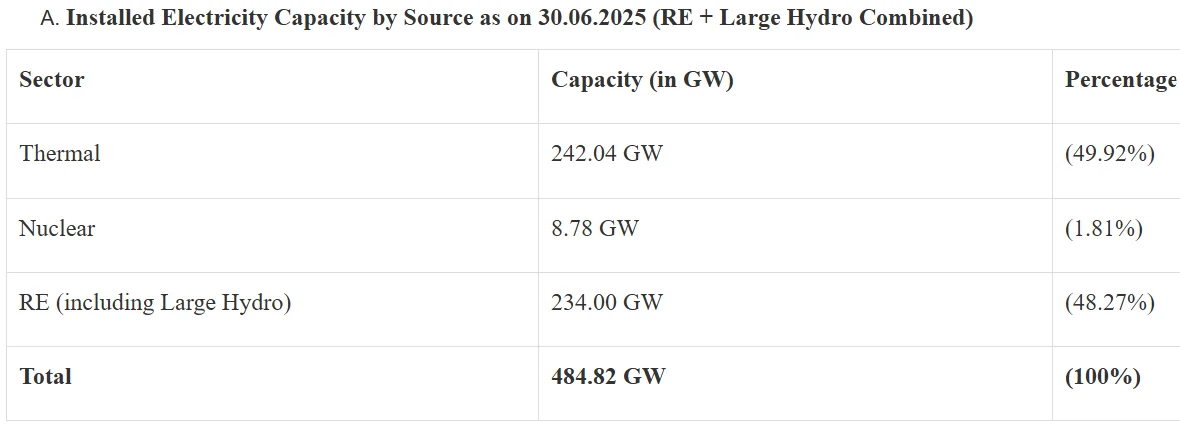Rapid Fire
India Achieves 50% Non-Fossil Fuel Power Capacity
- 16 Jul 2025
- 2 min read
India’s non-fossil fuel power capacity has reached 242.78 GW out of 484.82 GW total installed capacity, 5 years ahead of its 2030 target under the Paris Agreement's Nationally Determined Contributions (NDCs).
Non-Fossil Fuels:
- Non-fossil fuels refer to energy sources that are not derived from fossilized organic matter such as coal, oil, or natural gas.
- It includes both renewable energy sources (solar, wind, and hydropower) and non-renewable energy sources (nuclear) energy sources.
- As of June 2025, India’s total installed electricity capacity stands at 484.82 GW, with 50% coming from non-fossil fuel sources, which includes:
- Renewable energy: 184.62 GW (38.08%)
- Large hydropower: 49.38 GW (10.19%)
- Nuclear energy: 8.78 GW (1.81%)
Key Initiatives Driving the Growth of India’s Renewable Energy Capacity:
- PM Surya Ghar Yojana promotes rooftop solar installations enhancing decentralised clean energy access.
- National Wind-Solar Hybrid Policy enabled hybrid power projects for optimal land use, grid stability, and cost-effective renewable generation.
- PM-KUSUM provides solar-powered pumps for agriculture
- PLI Scheme for Solar PV Modules encourages domestic manufacturing of high-efficiency solar modules.
- Green Energy Corridor Scheme strengthens transmission infrastructure for renewable energy.
- National Green Hydrogen Mission promotes production and use of green hydrogen as an alternative fuel.
- National Bioenergy Programme supports biogas, biomass, and waste-to-energy projects.
| Read More: India’s Renewable Energy Revolution |







